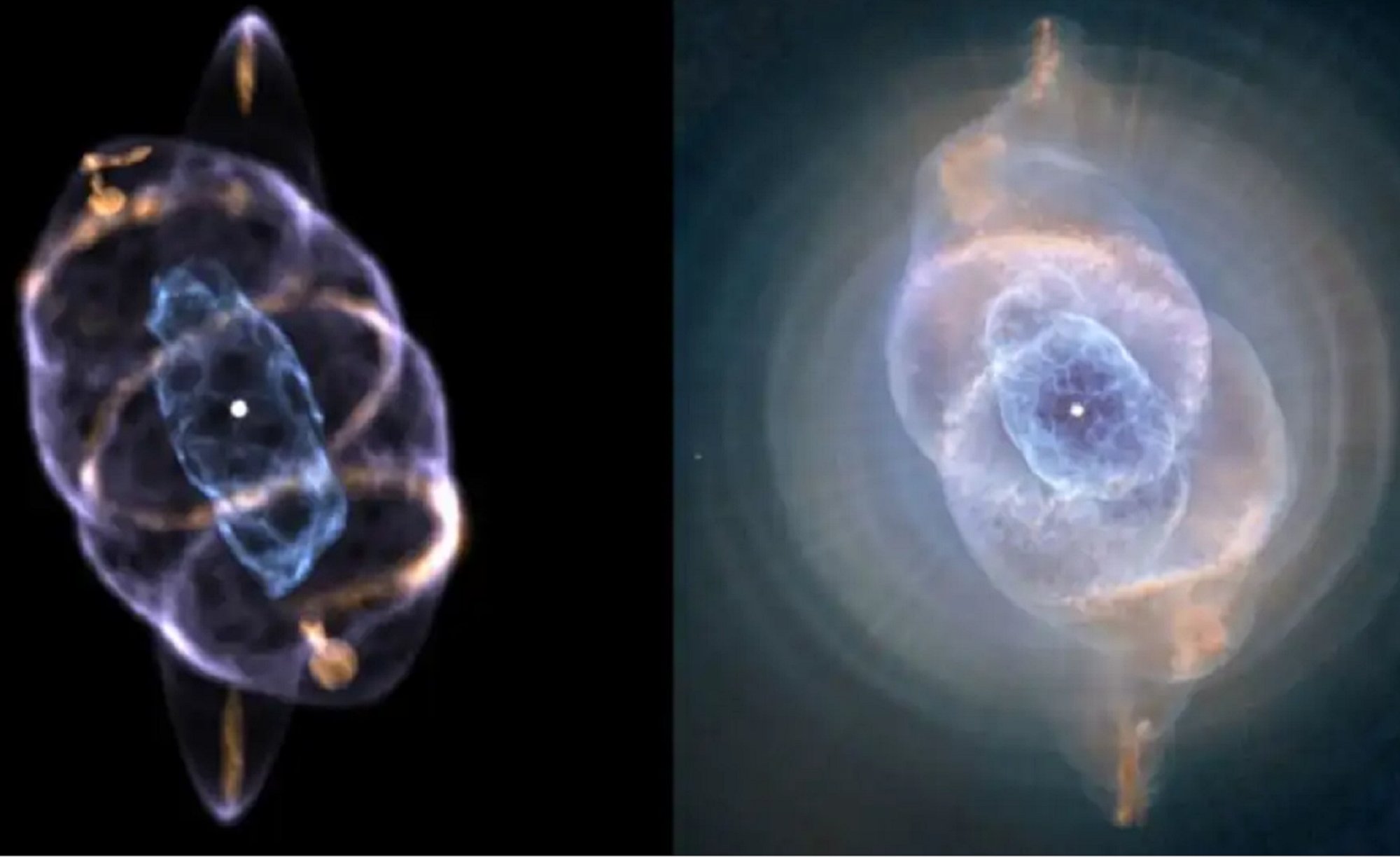

Known as one of the most complex nebulae in the universe, NGC 6543 , also known as the Cat’s Eye Nebula, is slightly more than 3,000 light-years away from Earth. Astronomers are a bit closer to understanding the 1,000 year old star factory, thanks to a the first three-dimensional model of the Cat’s Eye Nebula.
The study was is published in the October 2022 issue of the Monthly Notices of the Royal Astronomical Society and details the building of this stellar new model that reveals a pair of symmetric rings circling the nebula’s outer shell.
The Cat’s Eye Nebula can be seen in the constellation Draco located in the far northern sky. In addition to this new model, The Cat’s Eye Nebula was imaged by the famed Hubble Space Telescope in 1994. According to the European Space Agency (ESA), “it’s a visual ‘fossil record’ of the dynamics and late evolution of a dying star.” A planetary nebula like this one forms when a dying star releases an outer layer of gas, which creates a the colorful, shell-like structure that sets planetary nebulae apart. The telescope allowed astronomers to see the nebula’s complicated structure of knots, spherical shells, and arc-like filaments.
[Related: The James Webb Space Telescope opens spooky season with stunning images of Tarantula nebula.]
This unusual structure confounded astrophysicists for years because it could not be explained by previously accepted theories for planetary nebula formation.
According to the study, the symmetry of the rings suggests that they were formed by a precessing jet. The precession is similar to the wobbling motion of a spinning top. As the jet, a stream of gas and dust, wobbled (or precessed), it outlined a circle that created the rings around the Cat’s Eye. The new data indicates the the rings are only partial, which means that the precessing jet never completed a full 360-degree rotation, so the emergence of these jets was short lived. The authors say that these findings are strong evidence that this kind of set up is at the core of the Cat’s Eye, since only binary stars can power a precessing jet in a planetary nebula like this one.
Cat’s Eye’s jets and knots were likely formed as the angle and direction of the jet changed over time. The 3D model also allowed the researchers to calculate the tilt and opening angle of the precessing jet based on the rings orientation.
[Related: Dark energy camera gives a tasty view of a lobster-shaped nebula.]
“When I first saw the Cat’s Eye Nebula, I was astounded by its beautiful, perfectly symmetric structure. I was even more surprised that its 3D structure was not fully understood,” said lead author Ryan Clairmont, in a press release. “It was very rewarding to be able to do astrophysical research of my own that actually has an impact in the field. Precessing jets in planetary nebulae are relatively rare, so it’s important to understand how they contribute to the shaping of more complex systems like the Cat’s Eye. Ultimately, understanding how they form provides insight into the eventual fate of our Sun, which will itself one day become a planetary nebula.”
According to the Royal Astronomical Society, Clairmont is an astronomy enthusiast and prospective undergraduate at Stanford who sought to establish the detailed 3D structure of the Cat’s Eye to discover more about what mechanism is giving it such an intricate shape. He sought out the help of Wolfgang Steffen of The National Autonomous University of Mexico and Nico Koning from the University of Calgary, who developed an astrophysical modeling software particularly suitable for planetary nebulae called SHAPE.
.
